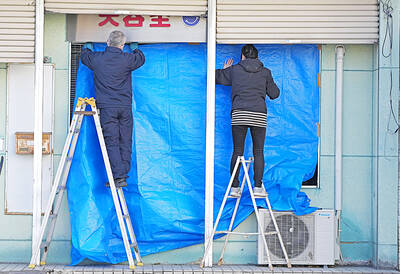Train commuters between Taipei and Keelung can expect enjoy faster service after the system expands the railroad tracks between Nangang (南港) in Taipei and Cidu (七堵) in Keelung from a double-track to a triple-track system.
Taiwan Railway Administration (TRA) Director-General Frank Fan (范植谷) said that at present, all southbound trains on the west coast depart from Cidu and all eastbound trains via the North Link on the northeast coast depart from Shulin (樹林) in New Taipei City (新北市).
Both southbound and eastbound trains have to go through the Nangang-Cidu section, making it difficult to deploy additional train services during peak hours, he said.
Expanding the double-track system to a triple-track system would increase the capacity for trains in the Nangang-Cidu section. The addition of a third track could help shorten the intervals between trains, lower the waiting time for passengers and reduce the number of train delays.
It had estimated that the expansion project could be completed by December next year, at a cost of about NT$2.74 billion (US$94.57 million).
“The goal is that trains can be dispatched every 10 minutes during peak hours between Taipei and Keelung,” Fan said.
The TRA has ordered 296 EMU800-Model train coaches to meet increasing demand for commuter train services, which are scheduled to be delivered to Taiwan in September next year, Fan said, adding that passengers commuting between Taipei and Keelung could start boarding the new trains in March 2013.
At present, trains operating between Taipei and Keelung are dispatched every 14 minutes on average. The Tzuchiang-class express trains complete the journey from Taipei to Keelung in 39 minutes.
The triple track system could allow the TRA to increase the number of commuter trains and reduce the interval from 14 minutes to 10 minutes. The travel time for passengers of the Tzuchiang-class express trains would also be decreased from 39 minutes to 35 minutes, the TRA said.
Meanwhile, train commuters can soon start boarding the trains at Fujhou (浮洲) station in New Taipei City, which is scheduled to become operational by the end of this month. Fujhou is one the train stations that the TRA has planned to install in the nation’s four largest metropolitan areas to improve service.
Aside from Fujhou, the TRA is planning to add Jhangshuwan (樟樹灣) station in Sijhih (汐止), five new commuter stations in Greater Taichung, two more in Greater Tainan and five more in Greater Kaohsiung.

Taiwanese were praised for their composure after a video filmed by Taiwanese tourists capturing the moment a magnitude 7.5 earthquake struck Japan’s Aomori Prefecture went viral on social media. The video shows a hotel room shaking violently amid Monday’s quake, with objects falling to the ground. Two Taiwanese began filming with their mobile phones, while two others held the sides of a TV to prevent it from falling. When the shaking stopped, the pair calmly took down the TV and laid it flat on a tatami mat, the video shows. The video also captured the group talking about the safety of their companions bathing

US climber Alex Honnold is to attempt to scale Taipei 101 without a rope and harness in a live Netflix special on Jan. 24, the streaming platform announced on Wednesday. Accounting for the time difference, the two-hour broadcast of Honnold’s climb, called Skyscraper Live, is to air on Jan. 23 in the US, Netflix said in a statement. Honnold, 40, was the first person ever to free solo climb the 900m El Capitan rock formation in Yosemite National Park — a feat that was recorded and later made into the 2018 documentary film Free Solo. Netflix previewed Skyscraper Live in October, after videos

Starting on Jan. 1, YouBike riders must have insurance to use the service, and a six-month trial of NT$5 coupons under certain conditions would be implemented to balance bike shortages, a joint statement from transportation departments across Taipei, New Taipei City and Taoyuan announced yesterday. The rental bike system operator said that coupons would be offered to riders to rent bikes from full stations, for riders who take out an electric-assisted bike from a full station, and for riders who return a bike to an empty station. All riders with YouBike accounts are automatically eligible for the program, and each membership account

A classified Pentagon-produced, multiyear assessment — the Overmatch brief — highlighted unreported Chinese capabilities to destroy US military assets and identified US supply chain choke points, painting a disturbing picture of waning US military might, a New York Times editorial published on Monday said. US Secretary of Defense Pete Hegseth’s comments in November last year that “we lose every time” in Pentagon-conducted war games pitting the US against China further highlighted the uncertainty about the US’ capability to intervene in the event of a Chinese invasion of Taiwan. “It shows the Pentagon’s overreliance on expensive, vulnerable weapons as adversaries field cheap, technologically